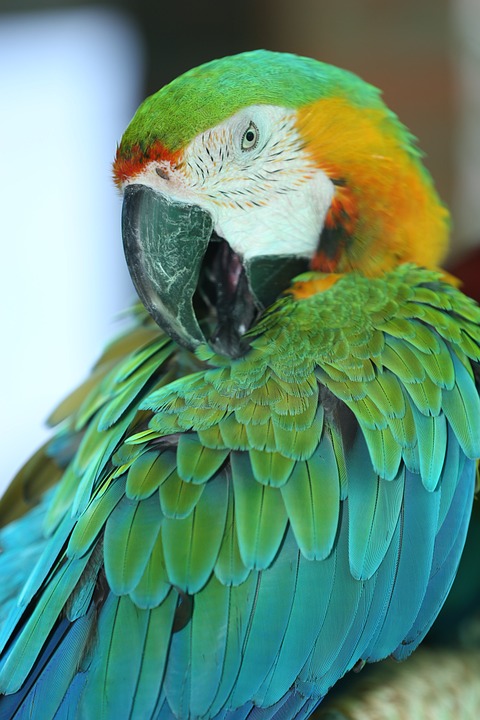Parrots, known for their vibrant colors and exceptional intelligence, are beloved pets worldwide. However, understanding their behavior, particularly how they react to strangers, is essential for both parrot owners and enthusiasts. In this article, we will delve into the fascinating world of parrot behavior and explore how these intelligent creatures respond to unfamiliar faces.
Parrots are highly social animals and thrive in the company of their flock. Understanding their natural inclination towards social interaction is key to comprehending their behavior towards strangers. Parrots possess hierarchical instincts, drawing from their wild counterparts. This aspect plays a crucial role in their reaction to unfamiliar individuals, as they often perceive newcomers as potential threats or members of an unknown flock.
One of the most apparent ways parrots react to strangers is through vocalizations. Their innate ability to mimic sounds allows them to communicate their feelings towards unfamiliar individuals. Parrots may exhibit various vocal reactions, such as loud screeching, hissing, or even imitating sounds associated with danger.
Parrots also communicate through body language, which provides insights into their emotional state. When confronted with strangers, parrots may display behaviors like fluffing their feathers, leaning away, or puffing up to appear larger and more threatening.
In some cases, parrots may exhibit aggressive behavior towards strangers. This aggression can manifest as biting, lunging, or even attacking. It is crucial for parrot owners to understand the underlying causes of aggression and take appropriate measures to manage it effectively.
A parrot’s past experiences play a significant role in shaping its behavior towards strangers. If a parrot has had positive encounters with unfamiliar individuals, it is more likely to exhibit a friendlier demeanor. Conversely, negative experiences may lead to heightened aggression or fear.
Different parrot species may display varying reactions to strangers. Some species are naturally more sociable and adaptable, while others may be inherently more cautious or wary of unfamiliar individuals. Understanding these species differences helps parrot owners provide appropriate socialization and care.
To help parrots feel more comfortable around strangers, gradual socialization, positive reinforcement, and creating a safe environment are recommended. Seeking professional advice is crucial if a parrot exhibits excessive fear or aggression.
Parrots can form bonds with strangers, especially if they are consistently exposed to positive experiences and interactions. Patience, trust-building exercises, and a calm environment are key to fostering these relationships.
Signs that indicate a parrot is feeling threatened by a stranger include vocalizations like screeching or hissing, aggressive behaviors like biting or lunging, and defensive body language such as fluffing feathers, leaning away, or pinning eyes.
When allowing strangers to interact with a parrot, it is essential to assess the comfort level of both the parrot and the stranger before allowing interaction. Always prioritize the safety and well-being of the parrot and ensure proper supervision during introductions.
Understanding parrot behavior, particularly their reactions to strangers, is vital for fostering a harmonious relationship between these intelligent birds and their human companions. By recognizing the natural instincts and social nature of parrots, we can provide the care and support necessary for them to thrive in various social settings. Remember, each parrot is unique, and patience, positive reinforcement, and a deep understanding of their behavior will contribute to a fulfilling bond with your feathered companion.









